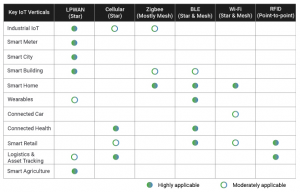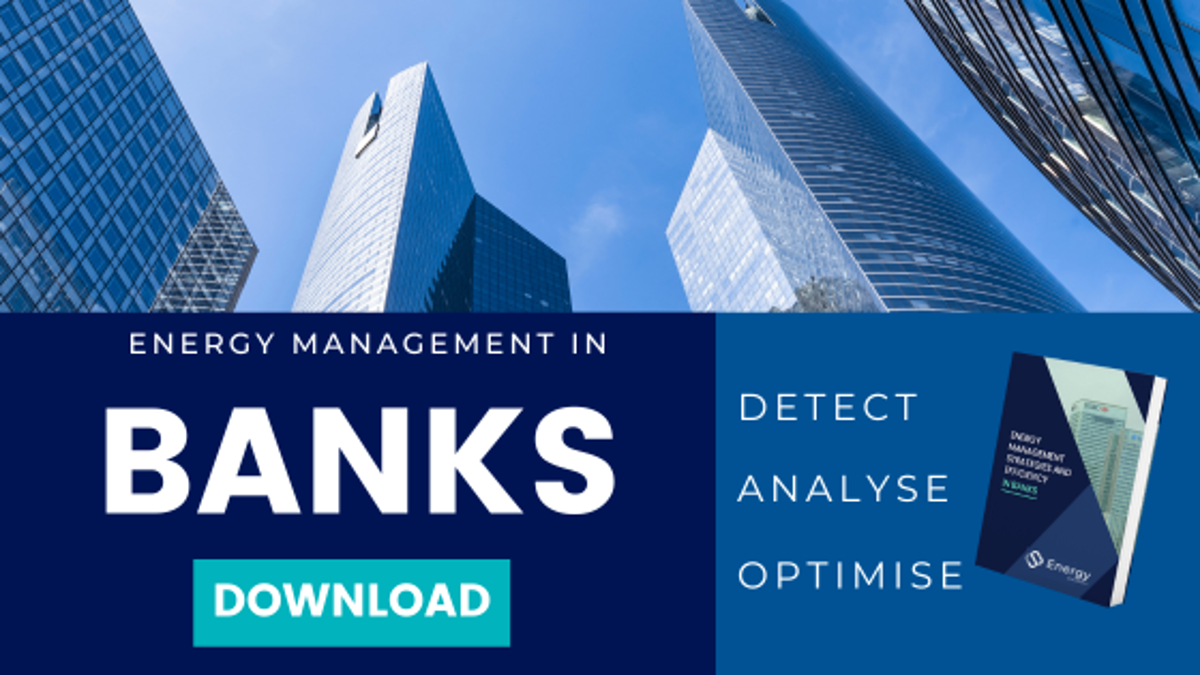Implementing an energy efficiency strategy for buildings in the banking sector involves analysing and considering a number of issues, including what type of IoT devices or sensors you will need to install.
Here are the main points to consider when implementing IoT technologies in bank branches and offices:
The concept of IoT or Internet of Things is familiar to any building manager, but it never hurts to review its definition. When we talk about IoT, we refer to all technologies used to connect objects with each other, through sensors and different software solutions.
The use of IoT technology allows for the telematic control and management of any aspect related to the building, such as:
- Programming the switching on and off of lights
- Controlling the opening and closing of doors
- Controlling the air conditioning
- Monitoring the indoor air quality
Among many other options.
All these opportunities for remote control and management of buildings are possible thanks to 3 basic components of IoT technology:
- The Smart Devices and installed Sensors that capture the data.
- The Cloud, where the data captured by the sensors are sent in real time, giving the possibility of accessing them quickly, immediately, at any time and from anywhere.
- And the data analysis and management platforms, which work with the data collected, providing valuable information for decision-making, planning and management of the building. Here we can include management solutions such as BMS, SCADA and EMS, among others.
And if we add the application of Artificial Intelligence and Machine Learning, you will make your buildings become Smart Buildings, able to improve user comfort, detect problems, and even save money by improving energy efficiency.
One of the sectors pioneering the application of IoT technology in their buildings is the banking sector. They are already applying IoT technology in their branches as well as in their head offices.
Let’s find out a little more about the types of IoT devices that are most common in the buildings and branches of the most innovative banks.
Types of IoT Devices Used in Banking Buildings
The banking sector usually consists of two main groups of buildings, corporate buildings (work offices) and bank branches.
If we focus on branches, which are the most numerous (in the UK there are almost 7,000 bank branches) we can identify certain specific needs that can be met or optimised with an IoT ecosystem:
- Competitiveness: Although it is not a very high cost, energy costs are included in the profit and loss account of a branch. This is why it is essential to monitor energy consumption. In this case, you will need to install IoT devices such as network analysers, energy meters, pulse counters (water/gas), etc.
- Productivity: Bank branch employees sell financial products, among others, and everything must work perfectly.
In this sense, connectivity with critical elements such as the entrance door, lighting or air conditioning are essential to ensure their proper functioning and prevent employees from wasting their time.
So, for the best possible productivity, the IoT sensors that you could use in this case in the branches are control PLCs, electrical actuators (contactors, relays, remote switches, etc.), communication gateways… - Advertising/Marketing: The high competition in the sector makes it necessary to have a good brand positioning. To achieve this, the branches at street level take great care of their design, as it helps them maintain and attract new customers.
For example, one of the key points is the exterior lighting which allows the bank branches to be clearly identified. Therefore, the control of these illuminated signs is essential to attract attention. As in the previous case, in order to manage and control this type of lighting you will need to have electrical controllers and actuators in each branch. - Customer service: The longer a customer stays in the branch, the more likely they are to purchase a product. They need to feel comfortable and secure during their time at the branch.
And what devices will help you control and optimise customer service? Within this category we could include comfort or indoor air quality, monitoring different variables such as temperature, humidity, CO2, PM2.5 or TVOC (total volatile organic compounds). If you want to know more about how to monitor Indoor Air Quality, take a look at this article.
Temperature or air quality probes are the most commonly used IoT sensors in these cases, although you could also get the information from the HVAC system’s own thermostats.
What are the best IoT Technologies used in Energy Efficiency or Building Management?
If we talk about the technologies used by IoT devices to transmit the information they collect, we can find a wide range of possibilities as shown in the following table:
Source: Behrtech
IoT sensors are a trend and are used in multiple applications, from connected vehicles to personal devices to the agricultural sector.
Focusing on energy efficiency and building management, the most widespread protocols used by IoT sensors are as follows:
- LPWAN: Low Power Wide Area Networks is currently the most trendy technology.
Sensors that communicate over LPWANs are characterised by low cost, long battery life and long range. They are designed to send little information per transmission, and take advantage of their low power consumption to avoid dependence on an external power supply.
In addition, there is no need for a receiver in the building itself, they are easy to install and barely require maintenance, just battery replacement after a few years.Clear examples could be the Sigfox and LoRa networks. - Zigbee: This is a low-power standard, but in this case also low range. Like other mesh protocols, it is necessary to have several devices or nodes in the same building to be able to send the information to the final receiver.
Due to its low power consumption, we can find several battery-powered Zigbee devices on the market. - Wi-Fi: We all know and use WI-FI on a daily basis with our mobile devices or computers, but it is also used less frequently for IoT devices.
On the positive side, a lot of information can be transmitted with each data transmission thanks to its bandwidth. Its main disadvantage is its high power consumption, which requires such devices to be plugged into a socket for power. Coverage is also not their strong point, and may require the installation of several receivers or repeaters within the same building.
In short, when choosing the right technology for your IoT devices you should look at power consumption, range and bandwidth.
Here then, the questions to ask yourself as an energy manager in a bank are:
- Are all of these technologies suitable for use in a bank branch?
- Are there any restrictions on the use of such IoT technologies within bank buildings?
- Is it necessary to fill a bank branch with IoT sensors?
How to Choose the Best IoT Technology for Bank Buildings and Branches
As mentioned above, a bank branch has its own particularities, and when choosing IoT devices, you should consider the following points:
- Security restrictions. Many banks are prohibited from installing equipment that transfers branch information outside their IT network.
Connecting equipment to the branch’s Wi-Fi can also become a never-ending ordeal at the hands of the bank’s IT department. These limitations may force you to use devices with more robust, wired communication technologies (BACNET, Modbus, KNX, etc). - Aesthetic constraints. The aesthetics of a bank branch are key for the user (customer) experience to be as expected. For this reason, you may face many restrictions when installing measurement or control devices in a branch. These devices must be in non-visible areas or have an aesthetic that matches the brand.
- Critical elements. A bank branch is not a candy shop, a lot of money is handled there. This means that most elements or installations cannot fail or have errors.
The entrance door is one of these critical elements, it should only remain open at a certain time. The robustness of the control system here is more important than ever. You will need to take this point into careful consideration when planning the installation of your IoT devices. - Existing devices. Sometimes the best solution is not new technology, but to take advantage of existing devices. Most likely the branch already has an existing HVAC system with thermostats and perhaps a centralised control system. Investigating whether you can get the data from that system and export it to another platform will be more cost-effective than duplicating the system with new devices.
We have seen that there are many options regarding technology for IoT devices, and in turn, that the banking sector has its particularities that restrict or enhance the use of some technologies or others. As always, each case must be studied by specialists in order to define the best solution for the client.
If you are planning an “Energy Efficiency Strategy for Bank Branches and Offices”, it is important that you are aware of the challenges faced by the sector and how offices consume energy. In our dedicated guide for the Banking Sector, you will learn these facts, as well as the steps to follow to implement your Energy Management Plan in Banking. Download the PDF here!
Editor’s note – This article has been written in collaboration with DEXMA’s energy expert Nil Bufí.

If you liked this article, check Nil Bufí’s LinkedIn profile, where he shares tons of useful tips and energy knowledge resources.





